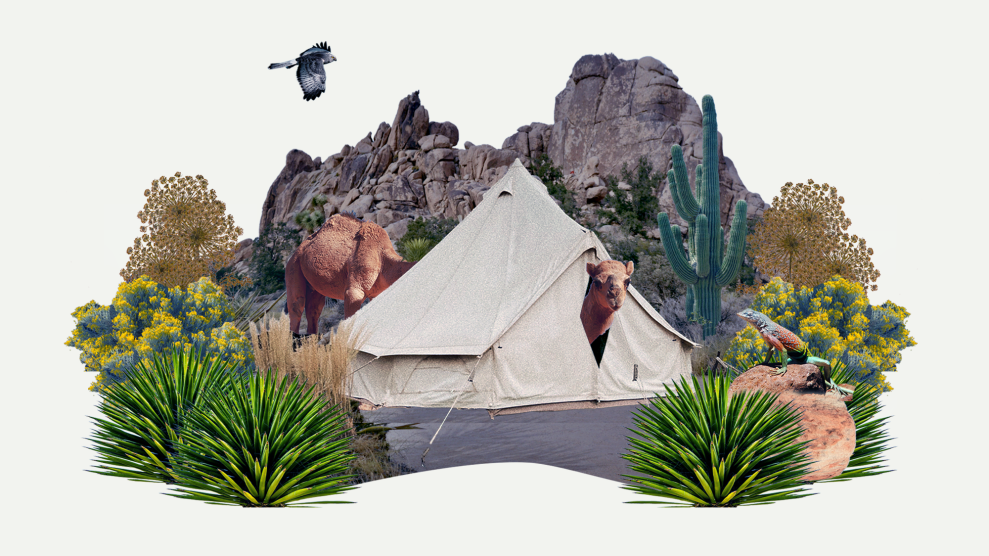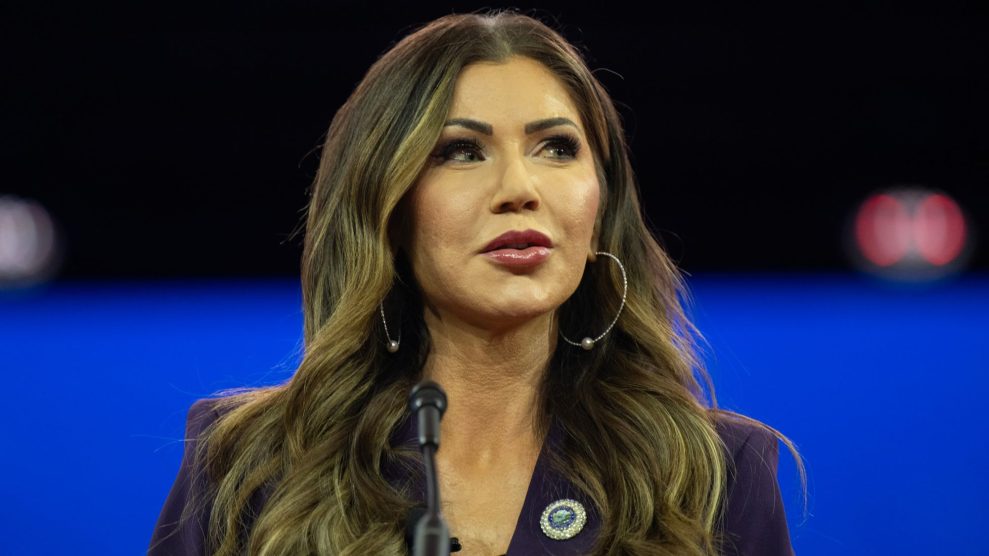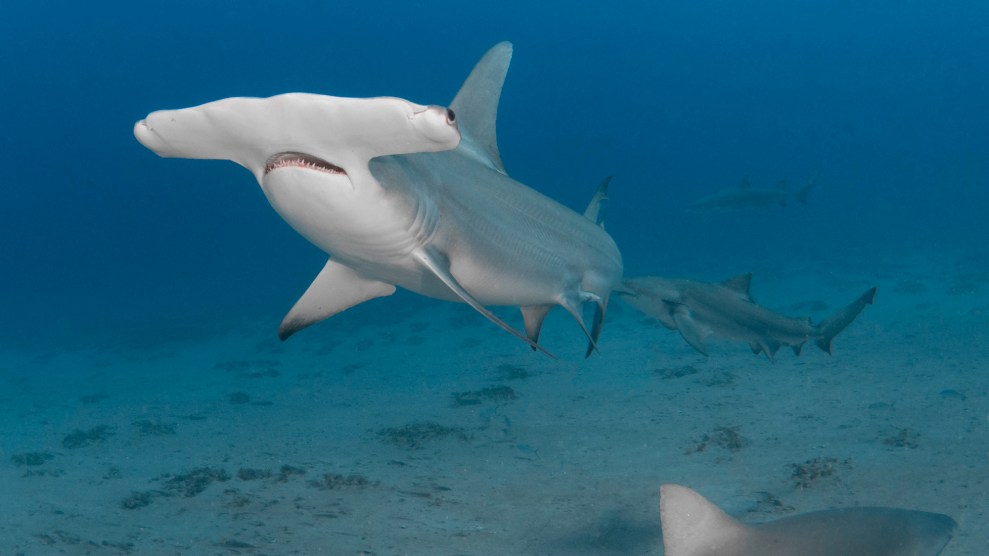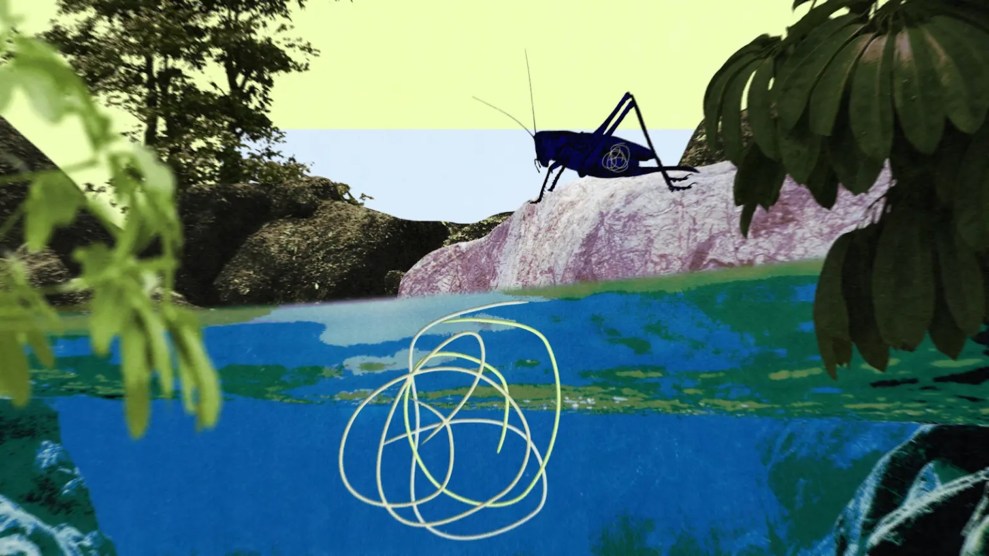
Jack Bonner and Dakotah Pinkus, technicians for Colorado Parks and Wildlife, transfer trout fry that will be placed in a lake in the Sangre de Cristo Mountains. Luna Anna Archey/High Country News
This story was originally published by High Country News and is reproduced here as part of the Climate Desk collaboration.
Nine years ago, Glenn Olson joined a panel whose members, in ordinary circumstances, would rarely appear in the same room together—let alone work as a collaborative team. Olson, chair of bird conservation and public policy at the National Audubon Society, sat with executives from Shell Oil, Toyota Motors, and the National Rifle Association, as well as with sportsmen, scientists and former government officials. The panel’s stated goal was to design a new system of funding conservation, one that would ensure the long-term flourishing of the nation’s wildlife.
State and territorial wildlife agencies currently receive most of their funding from hunting and fishing fees and equipment purchases. This revenue is prioritized for game species, while non-game species have to rely on the approximately $60 million agencies receive from the federal budget every year—an amount that, once divided among more than 50 agencies, forces many state and tribal wildlife managers to pick and choose which species to protect. If annual funding was increased to $1.3 billion, Olson’s panel reported, those agencies could reach thousands more “species in greatest conservation need,” restoring some populations before they become endangered.
The panel laid the groundwork for what is now known as the Recovering America’s Wildlife Act. If passed, RAWA would secure an annual $1.3 billion for wildlife agencies and $97.5 million for conservation work by tribal nations. Since it was first introduced in 2021, RAWA has been backed not only by environmental groups but by corporations hoping to avoid the costs associated with federal endangered species regulations. In a polarized Congress, the bill has earned unusually broad bipartisan support. “We got to the point where we just got more and more co-sponsors,” Olson said. “Everybody came together and said, ‘This looks like a durable solution.’”
This year, RAWA is poised for another vote on the Senate floor. The bill continues to gain co-sponsors on both sides of the aisle, but lawmakers have yet to settle on a funding source.
Now, a new conservation bill may compete for supporters, particularly among Republicans.
Last week, the America’s Wildlife Habitat Conservation Act (AWHCA) cleared the House Committee on Natural Resources with a 21-17 vote along party lines. The new bill seeks $300 million for local wildlife agencies and $20 million for tribes every year for five years. These funds would be “subject to appropriation” by Congress, however, meaning the full amount may not be granted each year. And to offset this spending, the bill would rescind $700 million of the federal funding appropriated to the National Oceanic and Atmospheric Administration through the Inflation Reduction Act. (NOAA plans to use most of its funding from the federal investment for coastal resilience and conservation projects.)
The $320 million was the amount the bill’s authors felt comfortable offsetting, said an aide to the House Committee on Natural Resources. Regarding the rescission, the aide said that the committee looked at departments that had received funding from the Inflation Reduction Act but had yet to spend it.
The bill, sponsored by Rep. Bruce Westerman (R-AR), chairman of the House Committee on Natural Resources, would also amend the Endangered Species Act, enabling states to submit their own recovery plans for threatened species to the US Fish and Wildlife Service. In some cases, the agency would be required to establish “objective, incremental goals” for recovery, with regulations becoming less stringent as those goals are met. The bill would also limit the agency’s ability to designate critical habitat on private lands and remove the requirement that federal agencies update their land-management plans every time a new species is listed or new critical habitat is designated.
Supporters of Westerman’s bill say the proposed funding mechanism appeals to fiscally conservative Republicans, and they argue that the amendments to the Endangered Species Act would encourage private landowners and government agencies to collaborate on species recovery.
Environmental advocates, however, say the bill is riddled with dealbreakers. RAWA supporters contend that the five-year sunset provision would limit what agencies can accomplish and even who they can hire. In contrast, RAWA would provide the baseline funding necessary for long-term environmental projects, such as forest restoration. Many supporters also worry that the proposed changes to the Endangered Species Act will weaken species conservation plans. As the new bill left the committee, Rep. Jared Huffman, (D-CA), lamented the loss of the “gold standard” embodied in RAWA.
When it comes to tribal-led conservation, RAWA offers multiple benefits that are not reflected in the new bill. For one, it would provide almost five times the amount of funding—a critical difference, since that money would be distributed across more than 574 federally recognized tribes and over 100 million acres of land. For another, RAWA drops any matching requirement for tribes, relieving them of the obligation to constantly reapply for more grants.
Tribes are already undertaking significant conservation work, said Julie Thorstenson, executive director of the Native American Fish and Wildlife Society, citing historical and ongoing contributions to the recovery of bison, salmon and the black-footed ferret. The amount of annual funding proposed by RAWA would allow them to expand the scope of their work and take on a more active role in national conversations, rather than dividing their budget between conferences with partners and action on the ground. “We still need base funding for tribes, and RAWA has been the most promising avenue for that,” Thorstenson said.
Mike Leahy, senior director of wildlife, hunting and fishing policy at the National Wildlife Federation, said that the annual funding requested by RAWA is the minimum—not an inflated estimate—of what is needed to protect over 12,000 at-risk species nationwide. While acknowledging Rep. Westerman’s intentions, Leahy pointed out the bill has a major “political problem,” given that most Democrats firmly oppose rescinding any money from the Inflation Reduction Act.
Meanwhile, RAWA faces its own challenges: Its sponsors still have yet to agree on a source of funds for the billion-dollar plan, though many ideas have been proposed. Previous iterations of the bill sought funding from oil and gas leases, taxes on cryptocurrency and fees paid by polluters.
Like Leahy, Olson applauded the new bill’s willingness to dramatically increase funding for conservation. But it lacks the widespread support that has fueled RAWA for nearly a decade, and, as Olson pointed out, “In order to be durable, it almost has to be bipartisan.”















